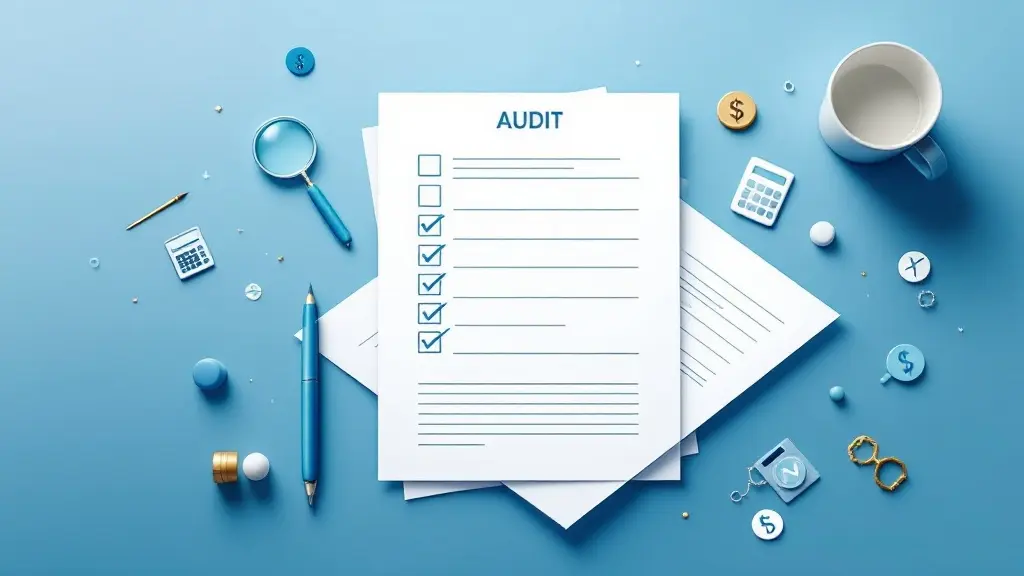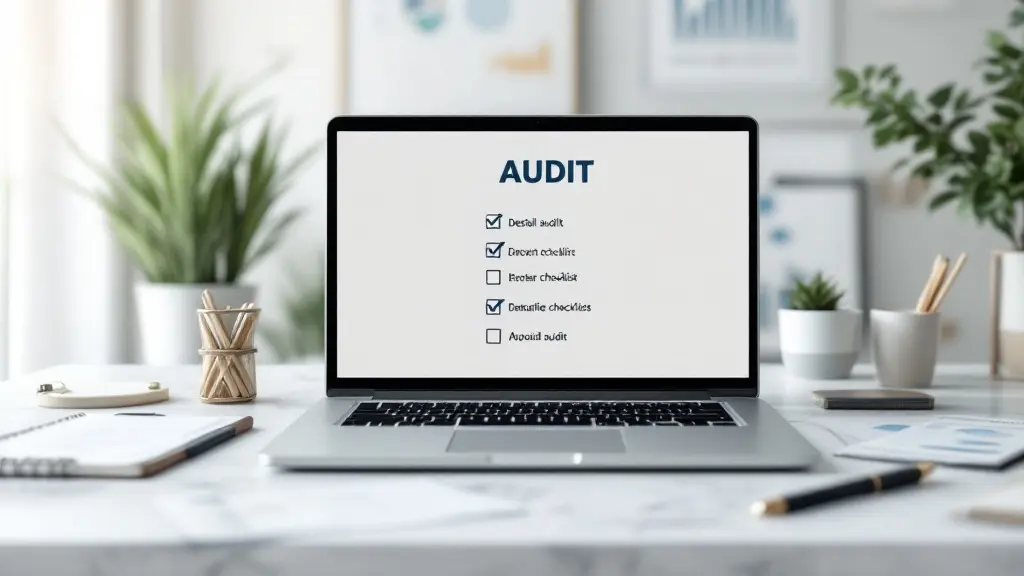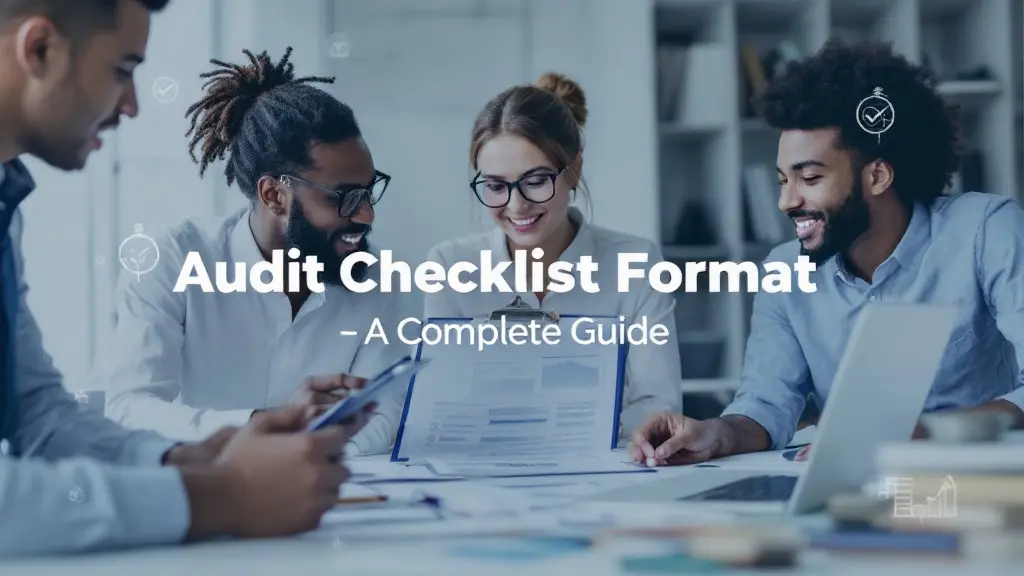Audit Checklist Format: A Complete Guide to Organizing Your Audit Process
Table of Contents
Most Read
[fusion_dropcap class="fusion-content-tb-dropcap"]W[/fusion_dropcap]hen it comes to audits—whether internal, external, or statutory—being organized is half the battle won. And that’s where a well-structured audit checklist format steps in. It’s not just a tool; it’s your roadmap to a smoother, error-free audit process.
In this blog, we’ll break down:
- What an audit checklist is
- Why you need it
- Key elements of an ideal format
- A sample audit checklist
- Tips to create your own effective checklist
Whether you’re a business owner, finance professional, or student trying to understand audit procedures, this guide will help you understand the practical side of audits in a simple, friendly way.
📌 What Is an Audit Checklist?
An audit checklist is a structured list of items or tasks used to verify whether an organization is complying with regulatory standards, internal policies, or financial reporting requirements. It’s essentially a to-do list for auditors to ensure nothing important is missed during the audit process.
Audit checklists can be tailored to:
- Financial audits
- Internal audits
- Compliance audits
- Operational audits
- ISO audits
✅ Why Is an Audit Checklist Important?
Imagine going grocery shopping without a list—you’re bound to forget something. The same goes for an audit. A checklist:
- Ensures completeness: No important step is missed.
- Standardizes the process: Makes recurring audits consistent.
- Improves efficiency: Saves time with a structured approach.
- Minimizes errors: Reduces the chance of overlooking compliance issues.
- Enhances documentation: Provides a clear record of procedures followed.
For organizations, having a well-prepared audit checklist format is not just good practice—it can make or break audit success.
🧩 Key Elements of a Good Audit Checklist Format
A checklist isn’t just a random set of questions. A well-designed audit checklist format follows a logical structure that includes:
1. Audit Title and Purpose
Start with clarity. Mention the audit type (e.g., Internal Audit – Q1 2025), department, and purpose.
2. Audit Scope
Clearly define the areas, processes, or systems being audited.
3. Reference Standards
Mention applicable standards, laws, or internal policies (e.g., Companies Act, 2013; ISO 9001).
4. Checklist Table Structure
Here’s how the actual checklist table should be formatted:
| S. No. | Checklist Item | Compliance Status (Yes/No/NA) | Remarks/Observations | Responsible Person |
|---|
This format allows auditors to tick off items, add comments, and assign follow-up actions.
5. Summary Section
Once the checklist is completed, summarize:
- Number of compliant vs. non-compliant items
- Areas needing improvement
- Action items and deadlines
📋 Sample Audit Checklist Format (Template)
Here’s a simplified example for a financial audit checklist:
Audit Title: Financial Audit – FY 2024-25
Department: Accounts
Scope: Review of financial statements, ledgers, tax compliance, and accounting records
Reference Standards: Companies Act, Income Tax Act, GST Rules
Audit Checklist Table
| S. No. | Checklist Item | Compliance Status | Remarks | Responsible Person |
|---|---|---|---|---|
| 1 | Are all journal entries properly recorded? | Yes | Accounts Head | |
| 2 | Is the bank reconciliation statement up to date? | No | Missing March entry | Finance Executive |
| 3 | Are GST returns filed timely for all months? | Yes | Tax Consultant | |
| 4 | Are fixed assets verified with physical count? | Yes | Admin Manager | |
| 5 | Are there any outstanding liabilities unrecorded? | NA | Not applicable this year | Accounts Head |
Audit Summary
- Total Items Audited: 5
- Compliant: 3
- Non-Compliant: 1
- Not Applicable: 1
- Action Items:
- Update March bank statement – Deadline: 30th April
- Submit updated report to audit team
🛠️ How to Create an Audit Checklist That Works
Creating a checklist from scratch? Keep these tips in mind:
1. Understand the Audit Objective
Is this a financial audit? Operational? Internal controls? Your checklist should reflect the goal of the audit.
2. Collaborate with Stakeholders
Involve team leaders or department heads. They can help identify key areas of compliance and risk.
3. Use Clear, Actionable Language
Instead of writing “Accounts review,” use “Are accounts reconciled with supporting documentation?”
4. Keep It Flexible
Not all checklist items will apply every time. Include a “Not Applicable” (NA) column to keep things relevant.
5. Digitize the Checklist
Use tools like Google Sheets, Excel, or audit software to make your checklist accessible and trackable.
📈 Benefits of a Structured Audit Checklist Format
Using a well-designed format brings several advantages:
- Transparency: Every step of the audit is documented.
- Accountability: Assign tasks to specific people.
- Efficiency: Faster audits with less back-and-forth.
- Compliance Readiness: Always be prepared for external audits or inspections.
🌐 Where to Use Audit Checklists?
Audit checklists aren’t just for finance departments. Here’s where they can be a game-changer:
- Human Resources: Hiring, payroll, and compliance checks
- IT Departments: Data security, backup systems, software licensing
- Manufacturing: Safety protocols, machinery maintenance
- Sales & Marketing: CRM data integrity, client contracts
- ISO or Certification Audits: Standard-specific compliance tracking
🧠 Pro Tip: Customize for Your Industry
Every business has unique requirements. While the core format remains the same, tailor the content for:
- Educational Institutions
- Healthcare providers
- Retail chains
- Logistics companies
- Startups
Example: For a logistics company, you might add checklist items like “Verify GPS tracking records” or “Check delivery time compliance.”
🔄 Frequently Asked Questions (FAQs)
Q1. Can I use one checklist for all types of audits?
Not exactly. While the format can be reused, the checklist items should be tailored to the type and scope of the audit.
Q2. How often should audit checklists be updated?
At least annually or whenever there are changes in regulations, business processes, or internal policies.
Q3. Is a digital audit checklist better than a printed one?
Yes. Digital checklists improve tracking, reduce paperwork, and are easy to share and update in real time.
🏁 Final Thoughts: Stay Ready, Not Reactive
An audit doesn’t have to be a stressful affair. With a clear, consistent audit checklist format, you can stay in control, identify risks early, and improve your business processes proactively.
Make it a habit to review and refine your audit checklists regularly. The more systematic your approach, the fewer surprises during the actual audit.
Whether you’re a small startup or a growing enterprise like FinTax24, the right tools and formats can save time, reduce errors, and keep your organization audit-ready all year round.
💡 Need help creating a custom audit checklist for your business or industry? Let FinTax24 guide you with expert accounting and compliance services tailored to your needs.
📞 Contact us today or visit www.fintax24.in to learn more!
Would you like me to upload this directly into a WordPress-ready format (HTML or plain text)?









